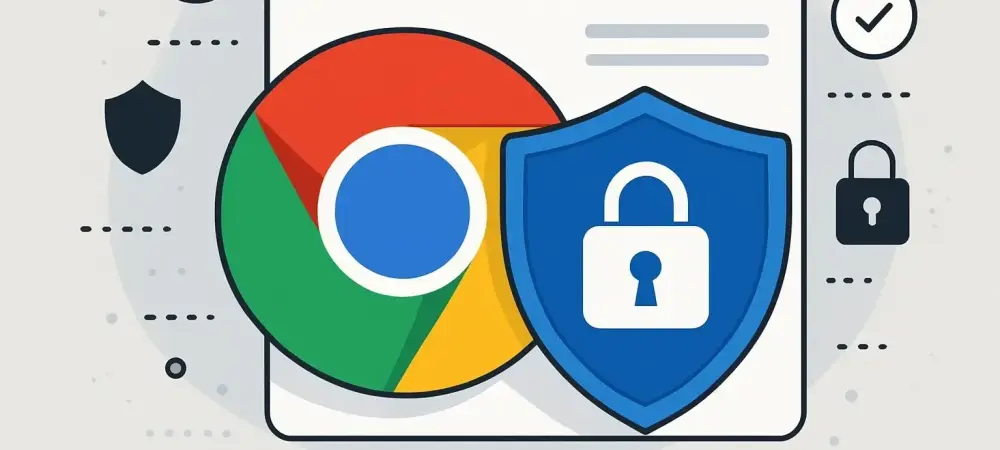In an increasingly digital world, ensuring browser safety is more critical than ever. With cyber threats evolving at an alarming rate, updating your browser is a fundamental security measure. This guide provides a clear path to updating Google Chrome, mitigating risks from vulnerabilities like CVE-2025-6554, which affects the browser’s V8 JavaScript engine. Following these steps will help keep your online activities safe and your personal information protected from potential cyberattacks.
The Urgency of Chrome Updates: Protecting Your Digital Experience
In the fast-paced digital environment, keeping your browser updated is vital to safeguarding your online experience. Frequent updates for Chrome are crucial in enhancing security features, defending against exploitation, and mitigating vulnerabilities. Highlighted by the recent discovery of the CVE-2025-6554 vulnerability, these updates play a pivotal role in preventing unauthorized access to your personal data and maintaining browser integrity.
CVE-2025-6554 has been actively exploited by cybercriminals, making it imperative for users to install the security patch promptly. The vulnerability, linked to the V8 JavaScript engine, poses a substantial risk by potentially allowing malicious actors to execute arbitrary code on your system. To thwart these attacks, promptly updating your browser is essential in maintaining a secure digital landscape.
Understanding Browser Vulnerabilities and Their Impact
Browser vulnerabilities like CVE-2025-6554 can significantly impact your security by weakening your browser’s defenses, allowing unauthorized access to sensitive data. Such vulnerabilities are entry points for cybercriminals, who exploit them to carry out attacks. These exploits can lead to unauthorized data access, privacy breaches, and potential identity theft, making it urgent for users to keep their browsers updated.
CVE-2025-6554 specifically compromises Chrome’s security by targeting its V8 JavaScript engine, causing concerns due to its widespread use. The vulnerability allows threat actors to potentially execute malicious code remotely, leading to system compromise. Zero-day vulnerabilities such as this exemplify the importance of timely updates in preventing these threats, emphasizing security’s ongoing battle against an ever-evolving threat landscape.
Step-by-Step Guide to Updating Chrome Securely
Step 1: Checking Your Chrome Version and Identifying Updates
The first step is to ensure you have the latest version of Chrome installed. Open Chrome and click on the three vertical dots in the upper right corner. Select “Help” and then “About Google Chrome.” This will display your current version and automatically check for updates.
Tips for Ensuring You’re Seeing the Latest Version
Sometimes, configurations or settings can affect update visibility. Ensure your system’s internet connection is stable and disable any network restrictions that might block update checks. Adjust Chrome settings if updates do not appear, as ensuring access to the latest version is critical for securing your browser.
Step 2: Applying the Latest Chrome Update for All Platforms
Once you identify an available update, applying it differs slightly depending on your operating system. On Windows, return to the “About Google Chrome” section and wait for the update to download and install automatically. On a Mac, utilize the same method, ensuring your software permissions allow for installations. For Linux, updates might be available through your distribution’s package manager or by downloading the latest version directly from the Chrome website.
Addressing Common Issues with Chrome Updates
Encountering errors during updates can be frustrating. A common issue is insufficient storage space, which can be resolved by freeing up space. Another potential issue is firewall blockages; ensuring Chrome’s permissions are correctly configured can help. Restart your device if problems persist, as this often resolves update errors.
Step 3: Restarting Your Browser to Finalize the Update
Restarting Chrome is crucial to completing the update process. Simply close and reopen your browser to ensure all changes take effect. This step is necessary to activate newly installed security patches and integrate them into your browsing environment.
Warnings About User Complacency and Update Fatigue
Ignoring restart prompts can leave your browser vulnerable, negating the benefits of downloaded updates. Despite the tendency to overlook restart requests due to update fatigue, completing this process is vital for maintaining security. Consistent vigilance ensures your browser remains protected from potential threats.
Quick Recap: Safeguard Your Browser with These Simple Steps
To maintain a secure browsing environment, follow these essential steps: verify your current Chrome version through the browser settings, execute the update process by following platform-specific instructions, and complete a full restart of your browser post-update. Implementing these steps reinforces your browser’s defenses against emerging threats and maintains a secure user experience.
Broader Implications: The Role of Security Updates in Modern Cybersecurity
Keeping current with browser updates is integral to larger cybersecurity practices and necessary for both personal and professional internet use. Regular updates align with proactive security policies across industries, ensuring optimal protection against evolving cyber threats. This approach ensures systems are equipped against known vulnerabilities and advances in cybersecurity efforts. Anticipating future challenges in browser security requires sustained vigilance and adapting to emerging technologies. The future will demand even more robust security measures, highlighting the importance of maintaining a culture of regular updates. Continuous evolution and awareness are pivotal in staying ahead of potential exploits.
Final Thoughts: Embrace Update Culture for Safer Browsing
By adopting a regular update schedule, browsers remain resilient against threats. Overcoming update fatigue is possible through understanding the critical role these updates play in cybersecurity. Building a routine and adopting a proactive mindset can significantly enhance digital safety. As cyber threats persist, verifying and updating browsers becomes an indispensable part of digital hygiene, safeguarding personal and organizational information from unwelcome intrusions.

